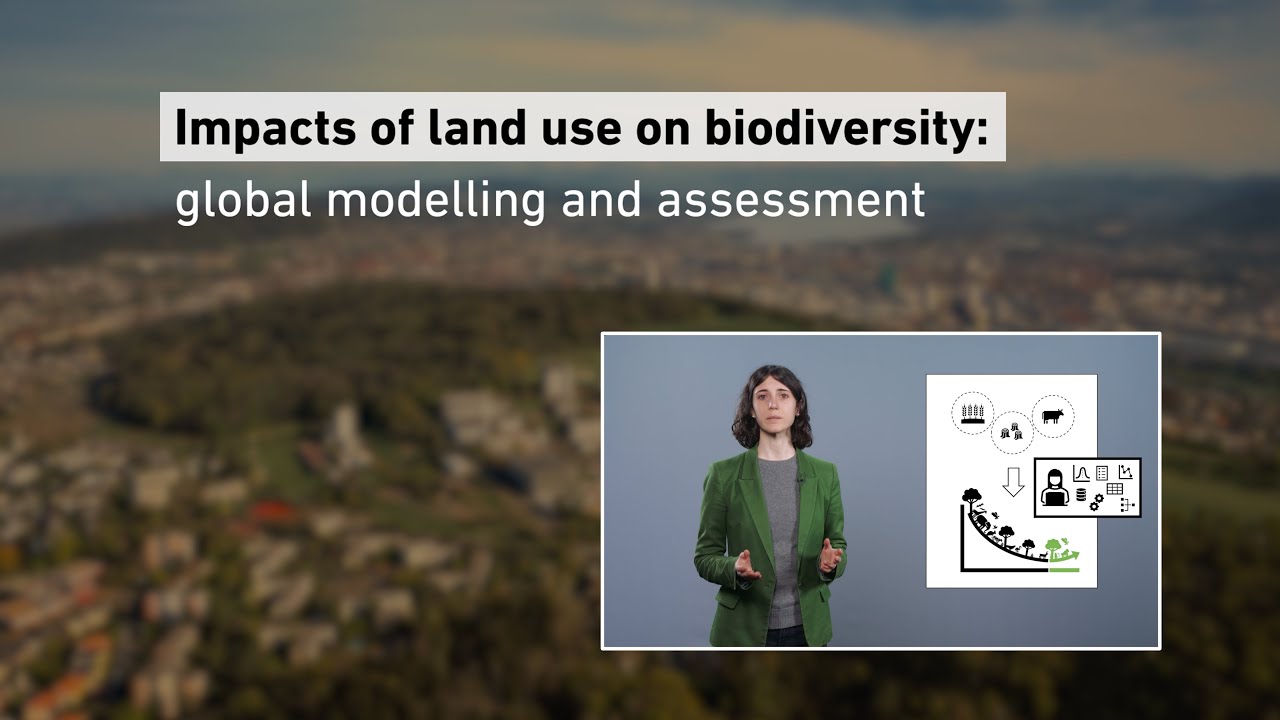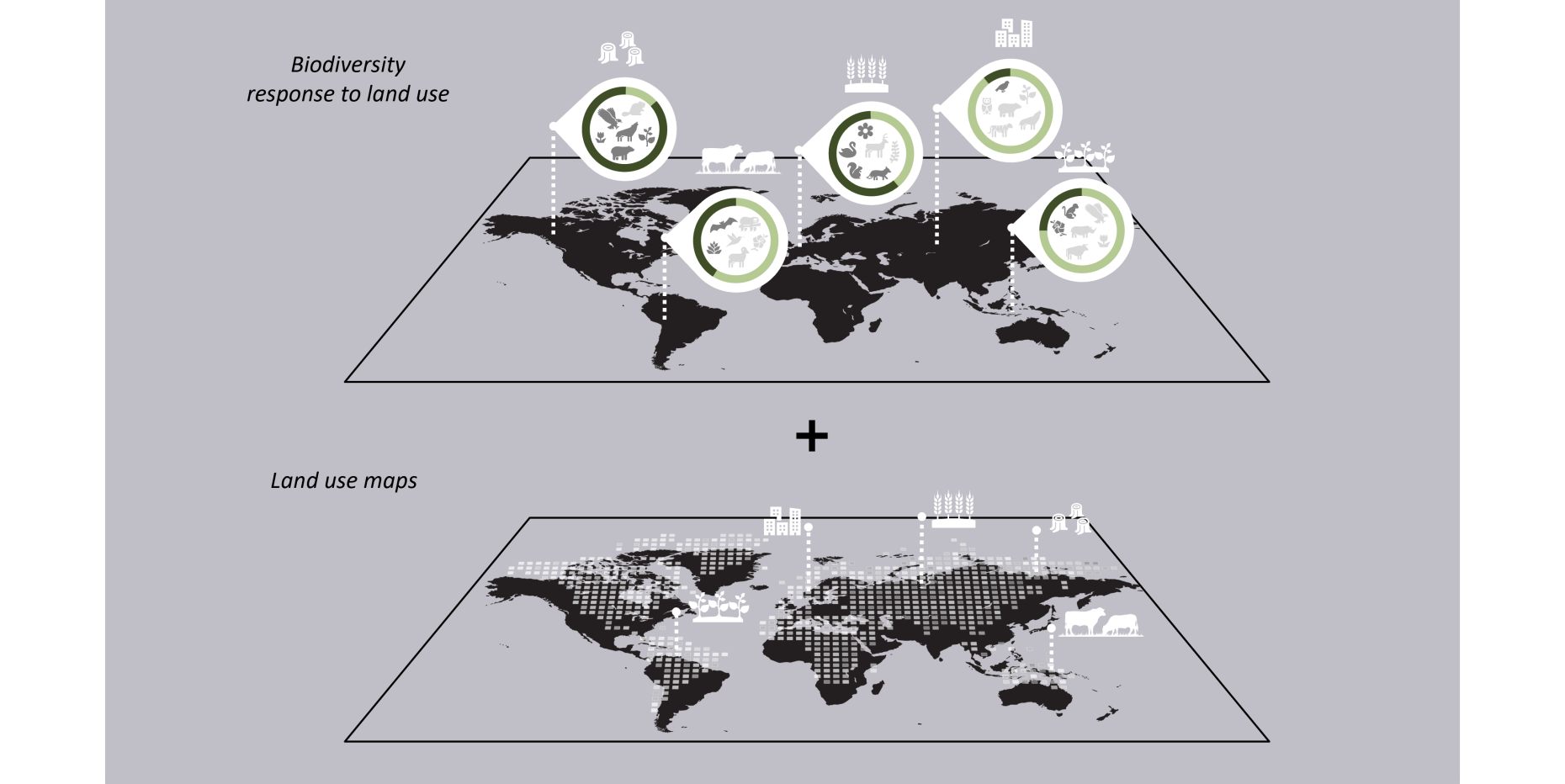Environmental assessment of land-use related biodiversity loss

In the short video here above, PhD student Francesca Rosa gives a brief overview of the project (if the video is not available in your region, please use external pagethis linkcall_made).
Many agricultural and forest commodities consumed in the industrialized world are produced in developing countries and emerging economies. Environmental impacts, such as biodiversity loss due to land-use change, do not occur only at the production phase but also along entire global supply chains. Decision-support tools such as Life Cycle Assessment (LCA) can be used to assess the overall impact of a product's life cycle and thus achieve more sustainable consumption. LCA calculates inputs and outputs (i.e., resource use and emissions) along the life cycle of a product, from the extraction of raw materials to production, use, and finally disposal or recycling. In a second step, the environmental impacts of these inputs (e.g., on biodiversity) and emissions are modeled. In LCA, all environmentally relevant impacts of inputs and outputs should be assessed to give a comprehensive picture of potential trade-offs between different environmental impacts, for, example between climate change and biodiversity loss.
This research line aims to develop a global, spatially differentiated assessment method of land use impacts on biodiversity compatible with LCA. To assess the land use impacts, the difference in biodiversity (measured as changes in species abundance and richness) between a production system (e.g., arable land) and a reference situation (e.g., a semi-natural ecosystem) within the same region is assessed. Even though much progress has been made recently, this methodology can still be improved.
Current project
Modelling the impacts of land use on biodiversity in the Life Cycle Assessment framework
PhD candidate: Francesca Rosa
This project is meant to close some of the gaps in the current methodology. In particular, it focuses on the impacts of different agricultural and forest management intensities and the effect of the landscape pattern, which need to be more comprehensively addressed. Furthermore, the project aims to implement a metric capable of encompassing more aspects of biodiversity, such as functional diversity, which is still lacking.

Collaboration
- external pageFulvio di Fulviocall_made, Researcher at the International Institute for Applied Systems Analysis (IIASA), Austria
- external pageLaura Scherercall_made, Assistant Professor at Leiden University, The Netherlands
Finished Projects
Doctoral Thesis of Laura de Baan
Doctoral thesis of Abhishek Chaudhary
These projects aimed to quantify region-specific impacts of various land use types on biodiversity (expressed as species richness) at the global scale. A meta-analysis of peer-reviewed publications was conducted to collect the pertaining data. If region-specific data was missing, impacts were approximated with average data across larger spatial scales (e.g. biomes). In addition, globally available data on species richness, endemism and ecosystem vulnerability were used to further account for region-specific differences.
This work was part of the interdisciplinary project myEcosystem - Assessing and Compensating the Ecosystem Impacts of Agricultural Products in the North-South Context, funded by ETH Zurich as a CHIRP (Collaborative, Highly Interdisciplinary Research) project.
Duration: 2009 - 2016
Biodiversity Impact Assessment Considering Land Use Intensities and Fragmentation
Laura Scherer, Francesca Rosa, Zhongxiao Sun, Ottar Michelsen, Valeria De Laurentiis, Alexandra Marques, Stephan Pfister, Francesca Verones and Koen J.J. Kuipers
Environmental Science & Technology, vol. 57: no. 48, pp. 19612-19623, American Chemical Society, 2023.
external pagehttps://doi.org/10.1021/acs.est.3c04191call_made
Can Forest Management Practices Counteract Species Loss Arising from Increasing European Demand for Forest Biomass under Climate Mitigation Scenarios?
Francesca Rosa, Fulvio Di Fulvio, Pekka Lauri, Adam Felton, Nicklas Forsell, Stephan Pfister and Stefanie Hellweg
Environmental Science & Technology, vol. 57: no. 5, pp. 2149-2161, Washington, DC: American Chemical Society, 2023.
external pagehttps://doi.org/10.1021/acs.est.2c07867call_made
Impact of Forest Management on Species Richness: Global Meta-Analysis and Economic Trade-Offs
Chaudhary A, Burivalova Z, Pin Koh L, Hellweg S
Scientific Reports 6, Article number: 23954, 2016
external pagehttpcall_madeexternal pages://doi.org/10.1038/srep23954call_made
Spatially Explicit Analysis of Biodiversity Loss Due to Global Agriculture, Pasture and Forest Land Use from a Producer and Consumer Perspective
Chaudhary A, Pfister S, Hellweg S
Environ. Sci. Technol, 50 (7), pp 3928–3936, 2016
external pagehttps://doi.org/10.1021/acs.est.5b06153call_made
Quantifying Land Use Impacts on Biodiversity: Combining Species-Area Models and Vulnerability Indicators
Chaudhary A, Verones F, de Baan L, Hellweg S
Environ. Sci. Technol., 49 (16), pp 9987–9995, 2015
external pagehttps://doi.org/10.1021/acs.est.5b02507call_made
High resolution assessment of land use impacts on biodiversity in Life Cycle Assessment using species habitat suitability modelsexternal pagecall_made
de Baan L, Curran M, Rondini PV, Hellweg S, Köllner T
Environ. Sci. Technol, 49 (4), 2237–2244 t, 2015
external pagehttps://doi.org/10.1021/es504380tcall_made
Land Use in Life Cycle Assessment: Global Characterization Factors Based on Regional and Global Potential Species Extinction
de Baan L, Mutel CL, Curran M, Hellweg S, Köllner T
Environmental Science and Technology, 47 (16), 9281–9290, 2013
external pagehttps://doi.org/10.1021/es400592qcall_made
